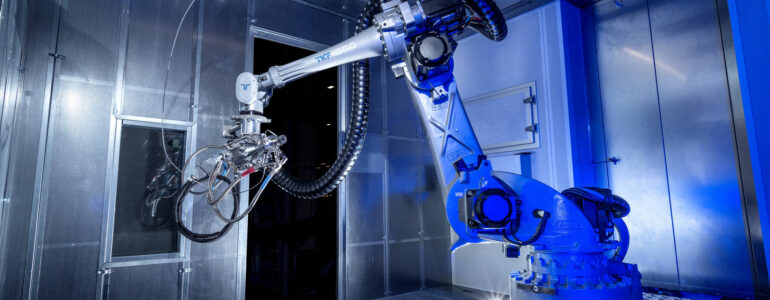17/05/23

Cold spray has come a long way in recent years. Developed by Soviet scientists in the 1980s, it’s since been developed into an advanced technique for building, coating and repairing parts. So, what exactly is cold spray additive manufacturing – and how is it changing the future of manufacturing? Start with this deep dive.
Cold spray is a powerful technique for rapidly fusing powdered metals, ceramics, or polymers without melting them. It can be used to quickly repair worn or damaged components – or as a form of additive manufacturing to rapidly build parts layer by layer.
There are two types of cold spray that Titomic uses to provide a versatile range of services and capabilities:
High-pressure cold spray (HPCS): used to spray high-strength metals and alloys with compressed gases like nitrogen, helium and air at high pressures (300-1000 psi). See our high-pressure cold spray systems.
Low-pressure cold spray (LPCS): used to spray soft metals and metal/ceramic mixes with compressed gases at low pressures (below 300 psi). See our low-pressure cold spray systems.
Cold spray additive manufacturing uses a supersonic spraying nozzle to shoot a heated high-pressure carrier gas (such as air, nitrogen or helium) to accelerate particles through at high velocities.
Particles kinetically deposit onto the surface they are aimed at by interlocking mechanically and bonding metallurgically. For this reason, at Titomic we often refer to our cold spray technology suite and products as Titomic Kinetic Fusion (TKF)®.
Through this process, materials are fused below their melting temperatures (hence the name cold spray). This makes cold spray additive manufacturing superior to other methods in terms of distortion and oxidation. This also means we can build faster and thicker than other additive manufacturing technologies.